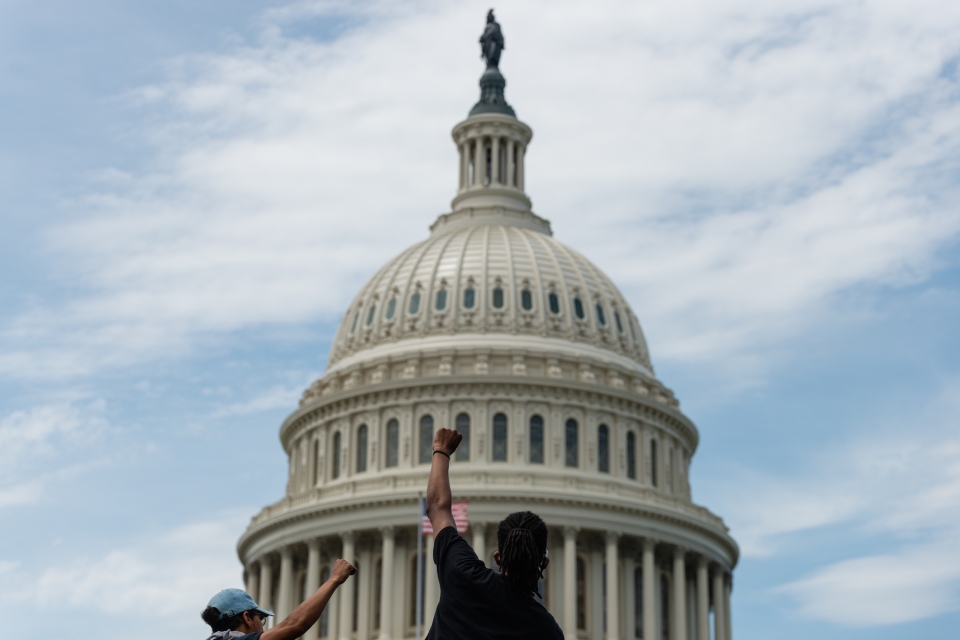Originally published on GWToday June 8, 2020 by Ruth Steinhardt
In the last few weeks, photojournalist Eric Lee has taken a tear gas can to the leg. He’s stood beneath a military helicopter as it descended on a crowd near the White House. He’s watched thousands of silent protestors lie still on the ground for more than eight minutes, marking the time it took for George Floyd to die while in the custody of the Minneapolis police.
Mr. Lee, a master’s student in new media photojournalism at the George Washington University’s Corcoran School of the Arts and Design, considers it a kind of duty to be at the center of the action and to chronicle the images that emerge with nuance and compassion.
“I feel really responsible for showing all the elements of these demonstrations, because you’re covering something raw and intimate and painful,” he said.
As a photojournalist, he said, part of his job is to provide as much information as possible—and to point his audience to others who will provide different perspectives.
“There’s always an element of the self in photojournalism, from the gear we choose to where we place ourselves and the view we show,” he said. “No matter where we place ourselves we’re always going to be a little bit…I don’t want to say biased, but how can we be objective when we’re necessarily creating a picture that is constrained?
“I don’t think we can ever say one photo sums up the D.C. protests, or any single event,” he said. “We have to look at everything in context.”


